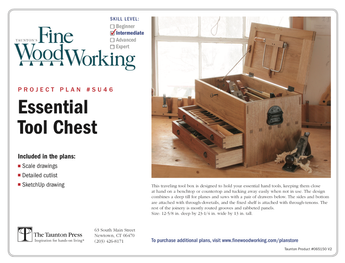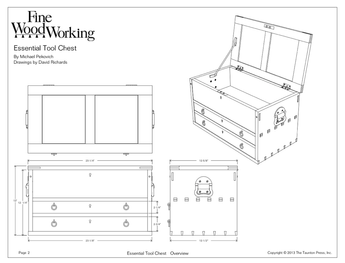Hey Guys,
I am going to put up some crown molding in a bathroom very soon, and I have one question for you pros out there. I have a couple of angles in the room that are around 45 degree’s, and they are inside corners. Should I cut one piece at 22.5 degree’s and then just keep cutting with a scrap piece to get a match? Or should I treat it like a 90 degree corner? Thank’s Guys, I hope that I made this clear enough.













Replies
I did a bathroom recently and posed some "how to" questions in the Breaktime forum. The overwhelming opinion was to cope the ends and not use miter or angle cuts at all. I was working with 90 degree corners only. Their procedure was to put up the most visible piece first with square end cuts. Then proceed around the room, one end coped and the other square. The last piece is the toughest because it has two coped cuts.
Because it was a large room and I was by myself, I decided that copeing would be more manageable and it was. I did have to fill some gaps but it was painted and looked great when finished.
Ian
IANCUMMINS-
"The last piece is the toughest because it has two coped cuts"
It doesn't have to be that way. Whenever I did crown moulding ,I picked my starting wall and went clockwise around the room. Clockwise, because it was easier for me to cope the left end of each piece. I coped the left end of first piece I started with . When I nailed it in place I left 2 -2 1/2 ft. unnailed at the coped end and proceded around the room. The last piece only had to be coped on one end,the square cut end was slipped behind the previously coped first piece which could be pulled away from the wall enough to let this happen. Then I finished nailing the first piece.Be not afraid of going slowly. Be afraid only of standing still. chinese proverb
Good tip. Thanks.
Ian, I've put up crown molding fro the last forty years, thought I knew all the tricks. Your idea for eliminating the double cope is a great one.
Mike
Funny you say that because I love that last double-coped piece!! Cut it 3/16 long ( say, if it's 10 ft. or so) or less xtra if it's shorter, bow out the center, position one end then the other end, then press the center in and super-perfect pressure seats each sharp cope edge permanently ito opposite ends! What could ever be better???
Occaisionally I have to double cope but I'd never call it fun. I can often eliminate the double cope by ending the circuit on an outside miter. Otherwise I end it at a scarf joint in the middle of a wall. I only rarely have to resort to tacking up a piece and coping to it then sldiing it out as described earlier. Even rarer still is the situation where I actually must cut the double cope and install it. It shouldn't be overly feared though, it just requires a bit more patience than usual. It is unwise to try to rush a double cope fitting.
Cut the first piece on a 22.5 * angle, but like an OUTside corner. The short point of the miter will touch the drywall miter, the long point goes over onto the other wall.
Then cut the inside 22.5* miter for a cope cut. You have to cope on an acute angle. I use a sabersaw with a metal cutting blade to cope with.Clamp crown to the mitersaw fence, keep sawbase at 90*, lay sawbase on miter, this will automatically backcut enough. Cut relief cuts, then cope close to edge. Finish up with sanding sticks that you make. Sanding sticks work better for me than files. Staple a piece of sandpaper around paint stick or dowels for the contours.Most of the time when a cope joint does not fit correctly the steps where the cove meets are not thin enough.They have to be paper thin.
mike
This forum post is now archived. Commenting has been disabled